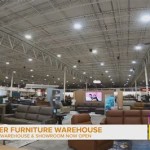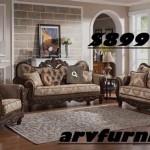Furniture Considerations for Assisted Living Apartments
Furnishing an assisted living apartment requires careful consideration of the residents' needs, safety, and comfort. Unlike typical residential design, furniture selection should prioritize accessibility, durability, and the potential for adaptability as residents' physical and cognitive abilities may change. Selecting the right furniture contributes significantly to fostering an environment that promotes independence and well-being. This article explores key furniture considerations for assisted living apartments, focusing on functionality, safety, and aesthetic appeal.
Accessibility and Ergonomics
Accessibility should be paramount when selecting furniture for assisted living apartments. This includes factors such as seat height, armrest design, and overall ease of use. Furniture that is too low or lacks adequate support can pose challenges for residents with mobility limitations, potentially leading to falls or discomfort.
Chairs and sofas should feature a seat height that allows residents to sit down and stand up with minimal effort. Ideally, the seat height should be between 17 and 19 inches from the floor. Firm cushions provide better support and prevent sinking, which can make it difficult for residents to rise. Armrests are crucial for providing stability and assistance during transitions. They should be sturdy, appropriately wide, and positioned at a comfortable height for residents to grip. Armrests that extend slightly beyond the front of the seat can further aid in standing.
Tables, both side tables and dining tables, should also be chosen with accessibility in mind. Adjustable-height tables can accommodate residents with varying needs and preferences. Tables should be stable and free from sharp edges or corners that could pose a safety hazard. Consider the space between table legs to ensure wheelchair accessibility for residents who use mobility devices.
Beds should be adjustable to accommodate different sleeping positions and medical needs. Adjustable beds allow residents to raise or lower the head and foot of the bed, which can improve circulation, reduce pressure points, and alleviate discomfort. The height of the bed should also be carefully considered to facilitate safe transfers on and off the bed. A bed height that allows residents to place their feet flat on the floor when sitting on the edge of the bed is generally recommended.
Beyond individual pieces of furniture, the overall layout of the apartment should promote accessibility. Ensure there is ample space for residents to maneuver around furniture, especially those using wheelchairs or walkers. Avoid overcrowding the space with unnecessary items that could create obstacles. Clear pathways and unobstructed access to essential areas, such as the bathroom and kitchen, are essential for maintaining independence and safety.
Ergonomics plays a significant role in furniture selection for assisted living apartments. Ergonomic design aims to minimize strain and discomfort by creating furniture that conforms to the natural contours of the human body. Chairs with lumbar support can promote proper posture and reduce back pain. Mattresses that provide adequate support and pressure relief can improve sleep quality and reduce the risk of pressure ulcers. Ergonomic considerations can enhance residents' comfort and well-being, contributing to a higher quality of life.
Safety and Durability
Safety is of utmost importance in assisted living environments. Furniture should be designed and constructed to minimize the risk of accidents and injuries. Durability is also crucial, as furniture in assisted living apartments often experiences heavy use and needs to withstand the rigors of daily wear and tear.
Rounded edges and corners are essential for preventing injuries from accidental bumps or falls. Sharp edges and corners can pose a significant hazard, especially for residents with impaired mobility or cognitive function. Furniture with rounded edges can mitigate this risk and create a safer environment.
Non-slip surfaces are crucial for preventing falls. Chairs and sofas should have non-slip feet to prevent them from sliding on slick floors. Rugs and mats should be securely anchored to the floor to prevent tripping hazards. The use of non-slip materials can significantly reduce the risk of falls, which are a leading cause of injury among older adults.
Durable construction is essential for ensuring that furniture can withstand the demands of daily use. Frames should be made from solid wood or metal, and upholstery should be made from durable, stain-resistant materials. Regular cleaning and maintenance are also important for extending the lifespan of furniture and maintaining a clean and hygienic environment.
Flame-retardant materials are an important safety consideration for furniture in assisted living apartments. These materials can slow the spread of fire, providing residents with more time to evacuate in the event of an emergency. Choosing furniture that meets or exceeds fire safety standards is crucial for protecting residents' safety.
Regular inspections of furniture are necessary to identify and address potential safety hazards. Check for loose screws, wobbly legs, or damaged upholstery. Promptly repair or replace any furniture that poses a safety risk. A proactive approach to safety can help prevent accidents and injuries.
The choice of materials can also impact safety and durability. Antimicrobial fabrics can help prevent the spread of bacteria and viruses, which is particularly important in assisted living environments where residents may be more susceptible to infections. Moisture-resistant materials can also prevent the growth of mold and mildew, which can pose health risks. Choosing materials that are easy to clean and disinfect is essential for maintaining a healthy and hygienic environment.
Aesthetic Appeal and Personalization
While functionality and safety are paramount, aesthetic appeal should not be overlooked when furnishing assisted living apartments. Creating a warm, inviting, and personalized environment can significantly enhance residents' well-being and quality of life. Furniture should be chosen to complement the overall design of the apartment and reflect residents' individual tastes and preferences.
A variety of styles and colors can be incorporated into the design to create a visually appealing and stimulating environment. Avoid sterile or institutional-looking furniture. Instead, opt for pieces that are comfortable, stylish, and inviting. Incorporate personal touches, such as framed photos, artwork, and decorative items, to create a sense of home.
Color psychology can play a role in creating a positive and uplifting environment. Warm colors, such as yellows and oranges, can evoke feelings of happiness and energy. Cool colors, such as blues and greens, can promote relaxation and calmness. Consider the overall ambiance you want to create when selecting furniture colors and patterns.
Texture is another important element to consider. Soft, comfortable fabrics can create a sense of warmth and coziness. Textured surfaces can also add visual interest and depth to the design. Incorporate a variety of textures to create a stimulating and engaging environment.
Lighting is crucial for creating a comfortable and functional living space. Natural light is ideal, but supplemental lighting should be provided to ensure adequate illumination, particularly in areas where residents read, work, or engage in other activities. Avoid harsh, fluorescent lighting, which can be jarring and uncomfortable. Instead, opt for warm, diffused lighting that is easy on the eyes.
Personalization is key to creating a space that feels like home. Encourage residents to bring their own furniture and belongings to personalize their apartments. This can help them feel more comfortable and connected to their surroundings. Work with residents to create a design that reflects their individual tastes and preferences.
The arrangement of furniture can also impact the overall aesthetic appeal of the apartment. Arrange furniture in a way that promotes conversation and interaction. Create comfortable seating areas where residents can relax and socialize. Avoid overcrowding the space with too much furniture, which can make it feel cluttered and overwhelming.

Assisted Living Furniture Stylish And Functional Options

Assisted Living Furniture Stylish And Functional Options

Assisted Living Furniture Stylish And Functional Options

5 Tips For Arranging Your Assisted Living Apartment Villas Of Jackson

Design For Senior Assisted Living Pink Little Notebook

How To Decorate An Assisted Living Apartment Optalis Healthcare

Foothill Heights Care Center Pasadena Nursing Home Skilled Facility

Things To Consider When Furnishing Your Assisted Living Apartments Discovery Village

Decorating Your New Space In Assisted Living Elk Run

Modern Assisted Living


